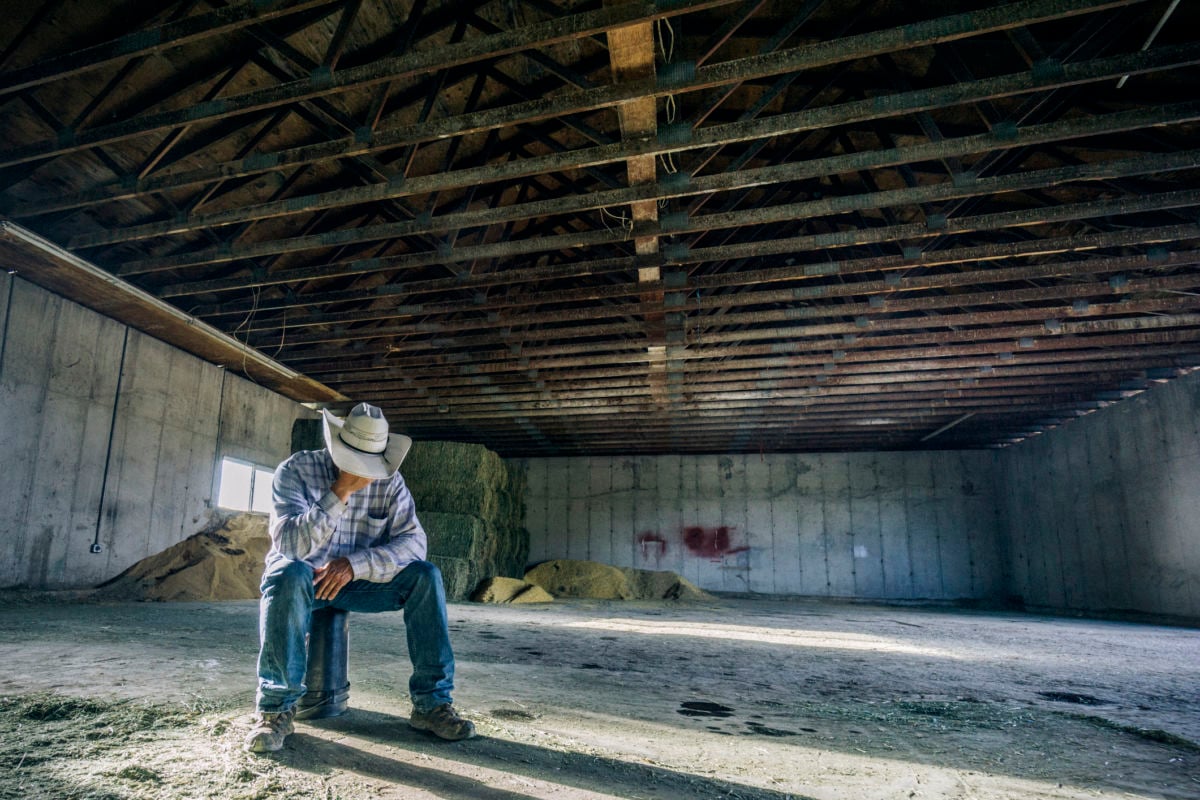Donald Trump and his race-baiting cohort love to proclaim, “If you don’t have borders, you don’t have a country!” Replace “borders” with “food,” and you’re onto something. Replace “borders” with “water,” and you’re onto something again.
Last month, The New York Times published a report on the harrowing conditions being endured by farmers in Nebraska and Wyoming. More than 100,000 acres have gone bone dry after a 100-year-old system of irrigation canals, tended carefully for generations, collapsed. It was yet another example of the U.S.’s aging, fraying, yet vital infrastructure abruptly falling apart.
This is peak growing season, and hundreds of farmers on hundreds of farms now have no water for their crops.
“The dirt is cracking,” reported The Times. “The beans are turning a sickly yellow. And the corn, which looked so promising just two weeks ago, is straining for fluid through long, scorching days. A portion of that canal system had for generations nourished corn, sugar beets, pinto beans and other crops with water siphoned from the North Platte River. That all changed on July 17,” when the century-old irrigation system failed.
This is a calamity piled upon multiple other calamities that have battered the nation’s food growers across a massive swath of farmland. Before there was no water, there was too much water, as shabby infrastructure ran headlong into the slow violence of climate disruption.
The March melt after a brutal winter subsumed vast swaths of farmland and industry when floodwaters carried by the Mississippi and Missouri rivers obliterated levees and dams. Money to shore up this infrastructure was never allocated. April, May and early June, prime planting season, turned the nation’s breadbasket into an inland sea after historic rains brought more catastrophic flooding.
“Through all of April and all of May,” reported The Washington Post on June 4, “wave after wave of rain hit the nation right in the breadbasket, with April capping the wettest 12 months on record for the continental United States. The past 60 days, in particular, have coincided with planting season in much of the country. States across the Corn Belt led the way, nearing or breaking previous precipitation records…. Recent measurements show most of Illinois’s famous topsoils are more waterlogged than they have ever been…. Farmers cannot plant in that muck.”
Before the floods and the droughts, however, there was Donald Trump’s trade war with China. Its monstrous impact was felt by many of those who supported his candidacy in 2016. Their support is far less certain in 2020. It is one thing to get punched in the face by Nature, or to suffer the consequences of our national failure to address our pressing infrastructure woes. It is quite another to get deliberately undercut by a guy who made broad declarations that he was in their corner.
China retaliated against Trump’s tariffs earlier this year by slapping tariffs of its own on soybeans and other agriculture products. Days ago, Trump broke a trade-war cease fire with 10 percent additional tariffs on $300 billion in Chinese goods. The consequences of Trump’s ill-conceived and poorly executed trade war became far more grave at the beginning of this week, when China devalued its currency and Chinese businesses halted purchases of U.S. farm goods. This action represents an escalation that will, once again, damage farmers who are literally and economically underwater already.
For already-battered U.S. farmlands, this is beyond the worst-case scenario.
The nation’s infrastructure is crumbling. The American Society of Civil Engineers (ASCE) gives it a D+ score, and estimates it will cost $4.6 trillion to adequately repair. These shoddy conditions would be bad enough on their own, but there’s another layer: Our infrastructure is enduring — and will continue to increasingly endure — an onslaught by forces unleashed by climate disruption.
The dilemma is straightforward: When there is more and more moisture in the atmosphere due to planetary warming, storms become fiercer and the potential for flooding looms larger. Saturated ground cannot absorb more water, and water will run over it before running over whatever infrastructure is in place to contain or redirect it. Our current infrastructure was put in place during the 20th century, making it old already, and was designed for a stable climate which no longer exists.
This swelling disaster will affect all sectors of the nation, few more directly than food production. It is far past time for powerful people — who pretend to be powerless over life or death matters — to take infrastructure and climate disruption seriously.
Stop yelling about the border, and enough with the ham-fisted trade war. If there is no food, there is no country.
Join us in defending the truth before it’s too late
The future of independent journalism is uncertain, and the consequences of losing it are too grave to ignore. To ensure Truthout remains safe, strong, and free, we need to raise $27,000 in the next 24 hours. Every dollar raised goes directly toward the costs of producing news you can trust.
Please give what you can — because by supporting us with a tax-deductible donation, you’re not just preserving a source of news, you’re helping to safeguard what’s left of our democracy.
